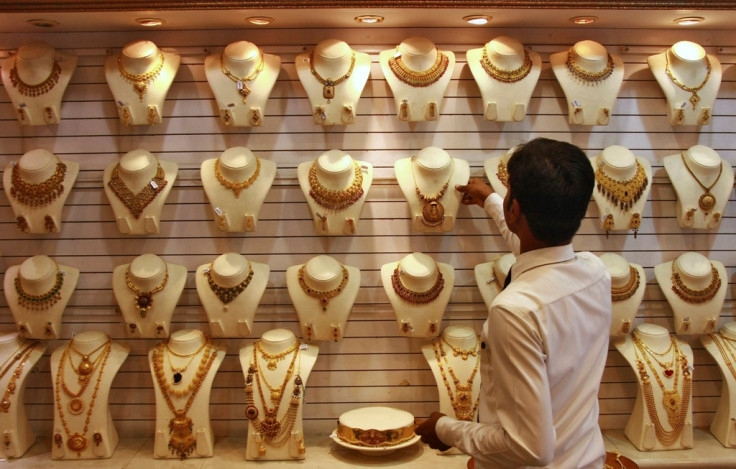Gold: Indian, US Buying Higher and China's Down

Overall gold demand has softened 2% in the third quarter while the quarterly volatility in the dollar rate was among the lowest seen over the past two decades, the World Gold Council has said.
Demand for gold was 929.3 tonnes in Q3. Jewellery demand softened by 4% year-on-year, but continued to perform well in a longer term context, the WGC report said.
Net investment demand increased by 6%, reaching 204.4 tonnes. Technology demand dipped to 97.9 tonnes as substitution again eroded gold usage. Central banks added a further 92.8 tonnes to their coffers.
Supply was down 7% in Q3 but little changed year-to-date.
"This was both a cause and effect of the benign demand environment. Investor behaviour in particular contributed to this circularity: the lack of a clear price signal caused investors to hold back from buying gold, which in turn dampened down price moves," the WGC said.
Shining Indian Demand
Indian jewellery demand at the same time jumped 60% year-on-year to 182.9 tonnes, partially helped by the lower base of Q3-2013, but there were more positives at play, the WGC said.
"The third quarter of 2013 was decidedly weak as the introduction of complicated new measures to restrict gold imports and the subsequent sharp rise in local prices knocked demand."
The report said the general sentiment among Indians was up this time, helped by the confidence in the new government. Another supporting factor was the weakening of rupee gold prices during August and September.
Global Demand Snapshot
Jewellery demand fell 4% in the third quarter to 534.2 tonnes while technology demand dropped 5% to 97.9 tonnes.
Total bar and coin demand showed the steepest decline, by 21% to 245.6 tonnes followed by the central bank purchase that dropped 9%.
Investment was the only avenue where demand showed a rise: it was up 6% to 204.4 tonnes, helping the overall demand, showing a 2% decline.
US Jewellery Demand
Demand for gold ornaments was much higher in the US this time, helped by the economic recovery that is gathering momentum, and the same was felt across the globe.
"Mounting conviction in the economic recovery has boosted sentiment and whetted consumers' appetite for discretionary purchases. Gold jewellery was a clear beneficiary," the WGC said.
The US imported jewellery from across the world, the highest from India and China, at six tonnes each, during the January-August period.
It bought five tonnes of jewellery from Italy, three tonnes from Mexico, two tonnes from Turkey and Oman, and one tonne each from Singapore, Thailand, Jordan and the Dominican Republic.
Consolidation in China
After the sharp rise in buying in 2013, Chinese demand showed signs of consolidation this year, which was the case also for Hong Kong.
Demand for the yellow metal in the third quarter was down 39% year-on-year, but was broadly in line with the 2012 Q3 figure of 148.2 tonnes and the five-year quarterly average of 154.9 tonnes.
"China's jewellery demand continued to normalise following last year's rapid expansion. The industry consolidated further during Q3, although larger brands have been relatively immune to the crunch," the WGC report said.
The golden week celebrations in early October saw higher demand and analysts expect another boost towards the year- end, helped by New Year buying.
Other Markets
As far as gold demand is concerned, Indonesia is the largest among small Asian markets, where demand dropped by 10 tonnes.
The decline was not just due to base effect but also because of uncertainty amid the presidential election which generally discouraged spending.
Turkish demand dropped to 19.2 tonnes, which was the lowest-ever for a third quarter. Domestic political turmoil, border tensions and weakening economic scenario all weighed on demand there, in addition to the ban on credit card instalments for paying for gold.
Demand in the Middle East was down 14% year-on-year to 36 tonnes, weighed down by base effect as well as increased demand for lower-karat and gem-set jewellery.
However, the long-term picture for the Middle East market seems to be finding a base, along the Q4-2011 trough, the WGC said.
© Copyright IBTimes 2025. All rights reserved.






















